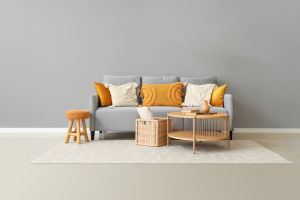Chairs are ubiquitous in daily life and carry rich historical and cultural connotations.
From ancient times to the present, their form and function have continuously evolved, reflecting their significant role in practicality as well as their unique charm in art and design.
The origins of chairs can be traced back to antiquity. Archaeologists have unearthed early examples of chairs from the ruins of ancient Egypt and Greece. These early chairs, typically crafted from stone or wood, were designed with simplicity and practicality in mind.
As time progressed, chair design became increasingly complex and diverse. During medieval Europe, chairs began to signify social status, reserved for nobility and the upper class. These chairs were often ornately decorated and elaborately carved, symbolizing the power and wealth of their owners.
The Renaissance marked a peak in chair design. Craftsmen of the period merged artistic sensibility with functional requirements, resulting in many classic styles such as Baroque and Rococo chairs.
These chairs were notable not only for their intricate shapes but also for their emphasis on comfort, enhancing the user experience. The materials used in chair construction also diversified. Beyond traditional wood, materials like metal, leather, and fabric began to see widespread use.
The Industrial Revolution brought about significant changes in chair production. The advent of machine manufacturing drastically reduced production costs, making chairs more accessible to the general population.
During this era, chair design shifted towards practicality and comfort, with simple and modern styles gaining prominence. Chairs became a staple in homes, offices, and public spaces, reflecting their growing role as essential furniture.
The 20th century ushered in a diverse era of chair design. Modernist designers championed simplicity, functionality, and ergonomics, resulting in iconic chair styles such as the Eames and Barcelona chairs.
These designs were not only innovative but also played a crucial role in daily life. Concurrently, advances in science and technology introduced new materials and manufacturing techniques, fostering a climate of creativity and freedom in chair design.
A chair’s function extends beyond merely providing a place to sit; it impacts various aspects of people's lifestyles. In homes, chairs are integral to living rooms, dining areas, and study spaces.
A comfortable chair can enhance overall quality of life, offering a moment of relaxation after a busy day. In offices, ergonomic chairs help reduce fatigue and boost productivity. In public venues like cafes, theaters, and parks, chairs provide rest and serve as social gathering points.
Modern chair design continuously adapts to societal needs. As environmental awareness grows, designers increasingly focus on sustainability, utilizing eco-friendly materials and recyclable designs.
Additionally, technological advancements have led to the emergence of smart chairs, which incorporate features like massage, adjustment, and health monitoring, offering users a more comfortable and health-conscious experience.
Chairs are more than just functional objects; they are the embodiment of human ingenuity and creativity. Their evolution reflects societal developments and changes in lifestyle.
From the simple stone chairs of antiquity to contemporary smart chairs, the transformation in chair design highlights significant changes in both form and function, while leaving an indelible mark on culture and art.
Whether in homes, offices, or public spaces, chairs influence daily life in unique ways and have become an indispensable element of everyday existence.
As people’s expectations for quality of life rise, the focus will likely shift towards enhancing comfort and versatility in chair design. Simultaneously, advances in technology will bring new materials and intelligent features to the forefront, offering further convenience and surprise.
Thus, chairs, though seemingly ordinary, will persist in playing a crucial role in modern life, continuing to witness and contribute to the advancement of human civilization.


